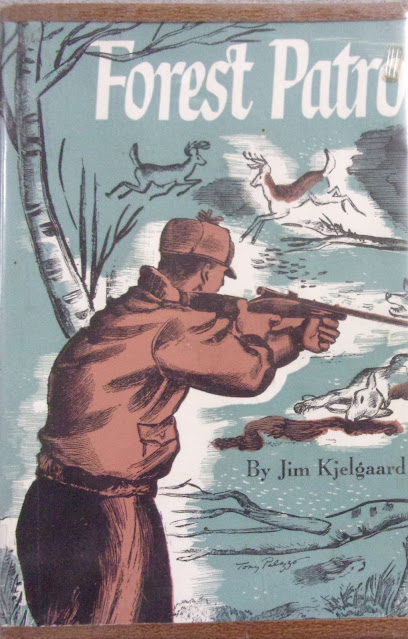A Little About... "Forest Patrol" by Jim Kjelgaard
JIM KJELGAARD turned 31 the year his
first novel, Forest Patrol, illustrated by Tony Palazzo, was published
by Holiday House (1941). He had married Edna – Eddy – Dresden two years
earlier and moved from Pennsylvania to Milwaukee where the couple welcomed
their first and only child, Karen. Kjelgaard had been working as a full-time
writer since 1938. His first significant sale had been a short non-fiction
piece, “Hair Over the Sights,” to Fur-Fish-Game in Jan. 1934 and in 1938
his adventure story, “River Man” (Nov. 5), made the pages of one of the most
celebrated pulps of the era: Argosy.
Over the next several years Kjelgaard regularly contributed to Argosy. In 1939 and 1940 alone, at least 17 of Kjelgaard’s shorts were published in its pages. His 1940 story, “The Battle of Dabbit Run” (Mar. 9), was adapted into an episode of the anthology television series, Studio 57, which aired June 15, 1955, on the DuMont Television Network. What connected Kjelgaard’s early adult short stories with his first novel, and really everything he wrote until his death in 1959, was a lavish admiration for the outdoors—the land and animals alike—and a forward-looking viewpoint of conservation.
Forest Patrol features a young outdoorsman named John Belden. John is familiar with the Allegheny back country since he has been hunting and fishing and trapping there since he could walk. He has dreamed of becoming a forest ranger just as long. So, when his chance arrives for a one-year substitute ranger job, John grabs it and his adventures span a ranger’s duties. He stalks a killer bear, plows snow, fights fires, and plants trees. Kjelgaard, whose older brother was a forest ranger in the early-1930s, based Forest Patrol on he and his brothers’ own adventures in the Alleghenies as kids. It is written in Kjelgaard’s direct and simple prose with a richly painted setting and an optimistic world view.
Forest Patrol met modest commercial success, just enough to garner a second book from Holiday House and make it hard find in the wild today, and paved the way for Kjelgaard to write his more well-known classics of young adult fiction. Like Big Red, which appeared only four years later.





Comments
Post a Comment